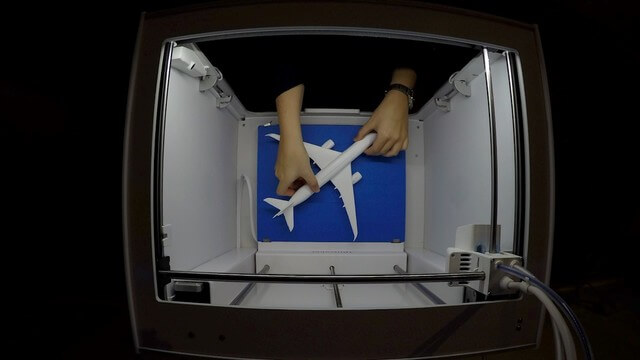WINDOWS, TRAY TABLES AND EVEN PLANES – BRITISH AIRWAYS TRIALS 3D PRINTING TO IMPROVE PUNCTUALITY AND REDUCE EMISSIONS CAUSED BY FLYING SPARE PARTS AROUND THE WORLD
- British Airways’ tech experts say the possibilities for 3D printing in aviation are limitless and share predictions of how 3D printers could transform the industry
- In the future machines could routinely be used to create aircraft parts, reducing delays for customers
- Initiative is part of airline’s flightpath to net zero carbon emissions by 2050
British Airways is exploring the possibility of using 3D printers to create aircraft parts in the future. These printers would be located at airports around the world to reduce delays for customers and emissions caused by transporting items.
The airline’s innovators predict that non-essential cabin parts will be first on the list to be generated, including pieces of tray tables, entertainment systems and toilets. While these components do not impact the safe operation of the flight, they can reduce the number of seats or toilets available for customers and cause delays as engineers wait for the parts to be flown to wherever the aircraft is.
Ricardo Vidal, Head of Innovation at British Airways, says this area of technology has never been more important to ensure sustainability and a seamless travel experience: “We work with start-ups and innovation partners from around the world to explore and implement the very latest technologies, from artificial intelligence to speed up turnaround times to biometrics, helping us to deliver a seamless airport experience for customers. 3D printing is yet another advancement that will keep us at the forefront of airline innovation.”
3D printing is an essential step towards the sustainable future of aviation, as the printers can produce parts that, while as strong and durable as traditional components, weigh up to 55 per cent less. Every kilogram removed saves up to 25 tons of CO2 emissions during the lifespan of an aircraft.
British Airways’ exploration of 3D printing follows the airline’s BA2119: Flight of the Future programme in celebration of it’s centenary. It’s research into the future of the customer experience suggested that within the next decade, biological scanners gathering travellers’ physiological and nutritional needs could suggest food and drink to meet individual requirements and print these on board the aircraft. In addition, the research predicts that jet lag could become be a thing of the past, with 3D printers producing personalised health supplements.
British Airways’ top ten predictions for how 3D printing could be used by airline’s in the future:
1. Cutlery
2. Products for amenity kits, such as toothbrushes or combs
3. Tray tables
4. Aircraft windows
5. Inflight entertainment screens
6. Seats
7. Baggage containers
8. Circuit boards for electrical components
9. Flight deck switches
10. Aircraft shells
Source: British Airways
